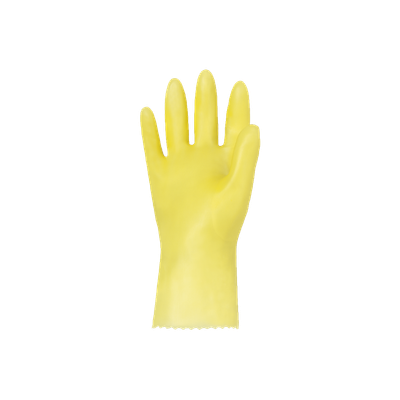Solo 977
The best chemical protection in disposable range : the compromise between protection and dexterity
-
CAT. 3
 0334
0334
-
Type B
 JKT
JKT
-

-

Specific advantages
 Comfort
Comfort
- Good compromise between thickness, suppleness and resistance
 Productivity
Productivity
- Good grip due to the embossed texture
 Skin protection
Skin protection
- Suitable for a wide range of chemical (see the chemical resistance chart)
 Guaranteed quality
Guaranteed quality
- Latex-free and powder-free to prevent allergies
- Silicone free to prevent traces, defects on metal sheet and glass prior to painting
 Practical
Practical
- Chlorinated for a better doning
Applications
Laboratory
- Pharmaceutical preparation
Chemical industry
- Sampling chemicals
Cosmetics and Pharmaceutical industry
- Handling in laboratories
Agriculture sector
- Tractor cabin filter change
- Short contact with treated crops
Product detail
| Material | Nitrile |
|---|---|
| Colour | green |
| Interior finish | Chlorinated |
| Exterior finish | Pebbled |
| Length (inches) | 9.5” |
| Thickness (inches) | 0.005” (5 mil) |
| Size | 6 7 8 9 10 |
| Packaging | 100 gloves/box 1000 gloves/carton |
| AQL Liquidproofness | 0.65 |
Chemical chart
OVERALL CHEMICAL PROTECTION RATING
Protection rating is determined by taking into account the effects of both permeation and degradation in an attempt to provide users with an overall protection guideline when using our glove products against specific chemicals.
Meaning of the colours :
The chemical test data and overall chemical protection rating should not be used as the absolute basis for glove selection. Actual in-use conditions may vary glove performance from the controlled conditions of laboratory tests. Factors other than chemical contact time
| Chemical Product | CAS # | Breakthrough time (minutes) |
Permeation level |
Standard | Degradation level |
Rating |
|---|---|---|---|---|---|---|
| 2-Propanol (Isopropanol) 99% | 67-63-0 | 48 | 2 | EN 374-3:2003 | 3 |
|
| Acetic acid 99% | 64-19-7 | 2 | 0 | EN 374-3:2003 | NT |
|
| Ammonium hydroxide solution 25% | 1336-21-6 | 16 | 1 | EN 374-3:2003 | NT |
|
| Ammonium hydroxide solution 29% | 1336-21-6 | 15 | 1 | EN 374-3:2003 | 4 |
|
| Cyclohexane 99% | 110-82-7 | 86 | 3 | EN 374-3:2003 | NT |
|
| Ethanol 95% | 64-17-5 | 5 | 0 | EN 374-3:2003 | NT |
|
| Formaldehyde 37% | 50-00-0 | >240 | 5 | EN 16523-1:2015 | 3 |
|
| Hydrochloric acid 37% | 7647-01-0 | 54 | 2 | EN 374-3:2003 | 4 |
|
| Hydrogen peroxide 30% | 7722-84-1 | >480 | 6 | EN 16523-1:2015 | NT |
|
| Isooctane 99% | 540-84-1 | >480 | 6 | EN 374-3:2003 | NT |
|
| n-Butanol 99% | 71-36-3 | 50 | 2 | EN 374-3:2003 | NT |
|
| n-Heptane 99% | 142-82-5 | 44 | 2 | EN 16523-1:2015 | 2 |
|
| Sodium hydroxide 20% | 1310-73-2 | >480 | 6 | EN 16523-1:2015 | NT |
|
| Sodium hydroxide 40% | 1310-73-2 | >480 | 6 | EN 16523-1:2015 | 4 |
|
| Sulfuric acid 10% | 7664-93-9 | >480 | 6 | EN 374-3:2003 | 4 |
|
| Sulfuric acid 40% | 7664-93-9 | >480 | 6 | EN 374-3:2003 | 4 |
|
| Sulfuric acid 50% | 7664-93-9 | >480 | 6 | EN 374-3:2003 | 4 |
|
*not normalized result
More gloves

Solo 967
Excellent dexterity, suitable with light food handling and environment. Its plastic packaging has been specifically designed to avoid cross contamination







